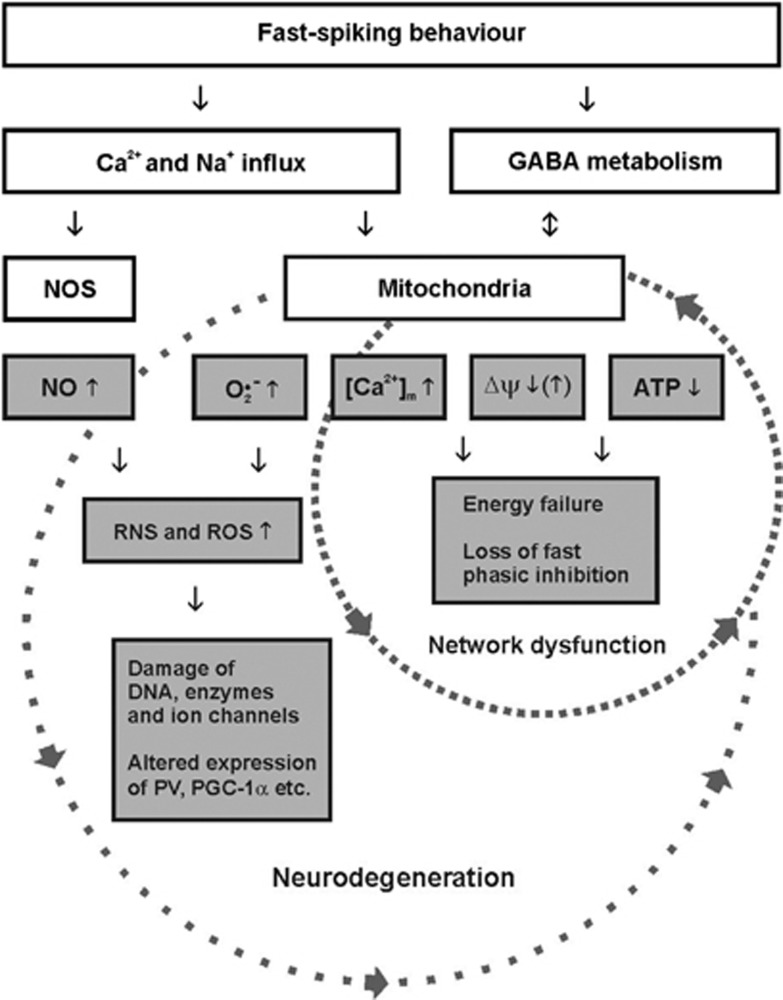Figure 3.
The simplified scheme illustrates the perspective on metabolic and oxidative stress in fast-spiking, parvalbumin-positive interneurons. The small circle reflects acute effects of hypoxia/ischemia or mitochondrial poisoning that rapidly result in neuronal network dysfunction. The large circle reflects chronic effects of mitochondrial dysfunction and/or cerebral hypoperfusion that finally result in neurodegeneration. Note that the pathophysiological mechanisms illustrated in both circles may partially interact, depending on the course of the disease and pathogenic factors such as alterations in expression of ion channels, parvalbumin or PGC-1α that may result in imbalances of oxidative and anti-oxidative processes. [Ca2+]m, mitochondrial Ca2+-concentration; GABA, γ-aminobutyric acid; NO, nitric oxide; NOS, nitric oxide synthase; O2•−, superoxide anion; ΔΨ, mitochondrial membrane potential; RNS, reactive nitrogen species; ROS, reactive oxygen species; PGC-1α, peroxisome proliferator-activated receptor gamma coactivator 1-alpha; PV, parvalbumin.

